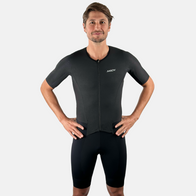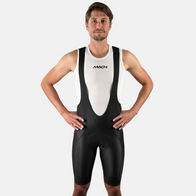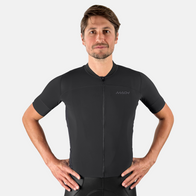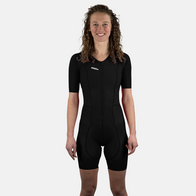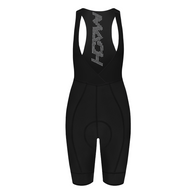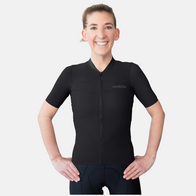
From Pool-Fit to Open-Water Fast
Didn’t begin your athletic career as a rough-water swimmer? That doesn’t mean you can’t become competent – or even competitive - in open water. By introducing exercises and activities to your training, you can improve your technique, increase your strength, alleviate your fear of mass-start open water swims, and reduce your swim time.
Find an adult swimming class and/or stroke analysis class with videotaping. Take advantage of experienced instructors and coaches to hone your technique, focusing on body and arm position, the catch and pull phase of your stroke, proper kicking, and efficient breathing form and timing. Never underestimate the power of visualization. By seeing your actual form you can more easily visualize improved form.
Increasing speed is about fitness – and damage control. Decrease the likelihood of a panic attack during your swim start by joining a master’s swim program. A structured workout and friendly competition will increase speed, while crowded lanes and a choppy pool more closely simulate open water race conditions. You’ll practice drafting, passing, touching and jostling one another, becoming more spatially aware and more comfortable swimming in close proximity to others.
Swimming, being the shortest leg of a triathlon, is often neglected. Swimming can be technically challenging and a very specific kind of fitness is required. Many swimmers log just 2-4 training hours per week but it is critical to train sufficiently for the distances you will be swimming in competition. The best way to get fast in the open water is to swim in the open water. Adding just one open water swim per week will help immensely.
It’s essential to relax and focus on a strong and efficient stroke rather than thrashing your arms wildly while going nowhere. A great way to figure out what works for you is to utilize hand paddles to learn the correct hand position above and below the waterline. With paddles, you quickly learn just how high your hands need to come out of the water. Under the water, you can experiment with positioning to see where your hands simply slice through the water, and where they really grab the water and propel you forward. Most competitive swimmers get less than 20% of their propulsion from kicking. Using pull buoys reminds you to relax and save your legs for the bike and the run.
Heads up crawl, also known as the Tarzan stroke, is essential for open water navigation, watching for buoys and landmarks to keep you on course, negotiating crowded waters, and avoiding collisions with others. Practice swimming the length of the pool, your head held high and still, focusing on the far end of the pool. This will put an additional strain on your neck and your legs will drop so your body is less streamlined. With time and practice, this skill will become second nature.
It is easy to grow accustomed to breathing exclusively to your dominant side. When swimming in the open water with the masses this becomes nearly impossible. Alternate side breathing can help. Train yourself to breathe both to the left and to the right and practice swimming more strokes between breaths. A great exercise is to breathe every 3, 5, 7, or 9 strokes, even a full pool length, constantly challenge yourself to swim farther on one breath.
The more you are able to relax, focus on your form, and let the stress of being in the water with a mass of thrashing bodies fall away, the faster you will be able to exit the water and transition to the bike. With proper preparation, swimming can become a joy - and a competitive advantage – as you swim like a dolphin in your local lake, river, or ocean.





